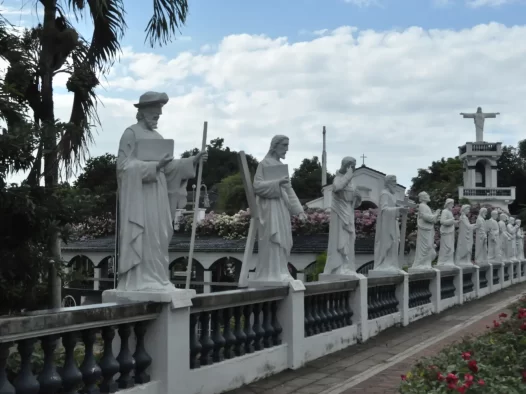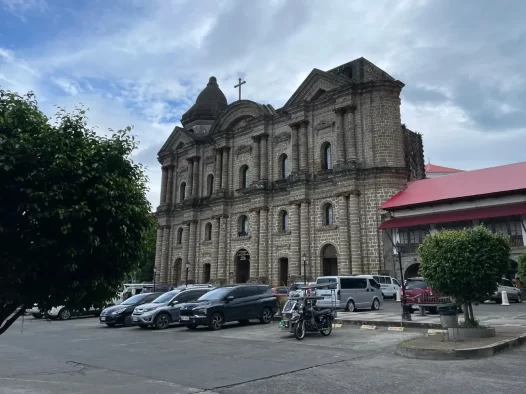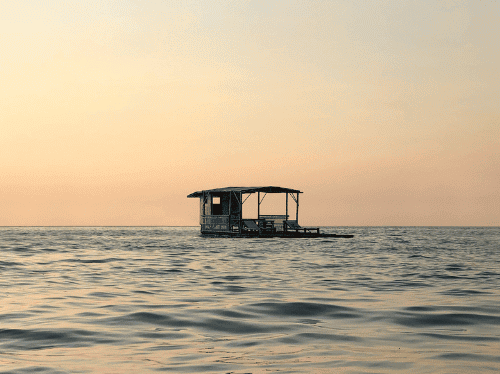Calaca City
On May 10, 1835, a significant chapter in Calaca’s history began as it was officially established as a town. However, its journey towards municipal status was preceded by a period when Calaca existed as a humble barrio of Balayan.
Before its elevation to a municipality, Calaca thrived as a vibrant settlement situated on the left bank of the Bolbok River, a waterway that has played a pivotal role in the community’s development and livelihood for generations. As a barrio, Calaca was an integral part of the larger Balayan region, contributing to its cultural tapestry and economic activities.
The transformation of Calaca from a barrio into an independent municipality to a city marked a significant milestone in the community’s growth and governance. The official establishment as a city brought with it newfound responsibilities and opportunities for the local residents to shape the course of their own destiny.
From its humble beginnings as a barrio to its evolution into a full-fledged city, Calaca’s history is a testament to the resilience, determination, and unity of its people. As a city, Calaca would continue to grow and progress, guided by the values and traditions that have been passed down through generations, while embracing modern developments and adapting to the changing times.
Over the years, Calaca’s identity and landscape have evolved, influenced by its history, culture, and natural surroundings. Today, it stands as a proud city, with its own unique character, contributing to the colorful mosaic of the Philippines’ diverse communities.
As Calaca continues to move forward, it cherishes its past and embraces the promise of a brighter future, where its residents work hand in hand to shape the destiny of their beloved town, honoring their heritage and striving for prosperity and progress.
History and Heritage
The town of Calaca has a fascinating history, and its name is tied to two intriguing versions of its origin. According to the first version, Calaca’s history can be traced back to the arrival of ten Datus who escaped from Borneo and eventually reached the islands of Panay in the Philippines. Among these Datus, two groups continued their journey further south until they reached the southern portion of Luzon.
One of these groups, led by Datu Dumangsil, settled at the mouth of the Pansipit River, an area that is now part of Taal. The tribe that accompanied Datu Dumangsil became known as the “Lakan” or “Laka” tribe, and the location was declared as Calaca, marking its early origins.
As tribesmen from different regions would visit Calaca, they exchanged greetings such as “Kalaka” and “Katribu,” meaning fellow tribesmen. These greetings became a common part of daily interactions and eventually evolved into the official name of Calaca.
The second version of how Calaca got its name involves an encounter with Spanish explorers. When the Spaniards passed by a group of native people who were building a Nipa hut, they asked for the name of the area. Due to a misunderstanding, the natives assumed that the Spaniards were asking about what they were doing at the moment. In response, they answered “Kalaka” because they were installing a roof made out of “kalaka,” a type of bamboo.
The establishment of Calaca as a town was pioneered by Rufino Punungbayan, Cayetano Buhay, Januario Punungbayan, Valentin Capacia, Juan Sanggalang, and Diego Inumerable. Don Rufino Punungbayan served as the first Gobernadorcillo of the Municipality during the year 1835-1836.
Initially located on the eastern portion of the present Poblacion, Calaca’s early dwellings were made with “kalaka” roofing. As the barrio grew over time, its founders recognized the need for a better site, considering the topography of the surrounding vicinity. The present location of Calaca’s Poblacion, with its flat terrain, was eventually selected as the more suitable site for the town.
Over the years, Calaca faced various challenges, including the Japanese occupation during World War II. However, the town’s residents exhibited bravery and resilience during this tumultuous period. After the war, with the establishment of the military government and the Philippine Relief and Rehabilitation Administration, the town gradually returned to normalcy.
Calaca also faced the challenges of the Huk movement, which spread to the remote barrios of the town. The local residents took up arms and fought against the Hukbalahap forces, ultimately suppressing the movement.
Despite the trials and hardships, Calaca’s history is a testament to the courage and unity of its people. Through the years, the town has grown and developed, embracing its past while looking forward to a brighter future. Today, Calaca stands as a proud town with a rich history, a testament to the strength and resilience of its people.
If you prefer a hassle-free trip, you can rent a car or hire a private vehicle for more convenience and flexibility. Public transportation, such as buses and jeepneys, is also available and can be a more budget-friendly option.
Batangas: Where history, beauty, and resilience converge, creating a tapestry of captivating stories and unforgettable moments.
Calacatchara Festival
The CALACAtchara Festival is a 10-day celebration culminating on October 24, the feast day of the city’s patron saint, St. Raphael the Archangel. Launched in 2004 by Mayor Sofronio “Nas” Ona, the festival aims to promote the town’s delicacy, “atchara,” made of pickled raw papaya. Caracol de San Rafael marks the start of the event on October 15, with a procession from the Archdiocesan Shrine to the shorelines of Calaca for a mass celebration. The festival includes a series of activities such as Drum and Lyre Competition, Senior Citizens’ Night, Pet Show, Job Fair, Car and Motor Show, and Mountain Bike Challenge, showcasing the talents and creativity of Calaqueños. The highlight is the Streetdance and Court Dance Competition where students from local schools showcase their skills, incorporating atchara-making and the city’s attractions in their performances. The festival peaks with a concelebrated mass and a procession on October 24, followed by a dazzling Firework Display and the Mayor’s Night Concert, making it a joyous and meaningful celebration for the community.
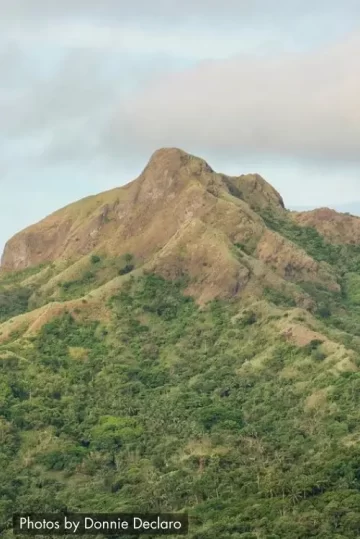


Local Attractions
Batangas in the Philippines offers a range of local attractions that cater to various interests. These are just a few of the attractions you can explore in Batangas. Whether you’re interested in history, nature, or relaxation, the city offers something for everyone.
Getting Around
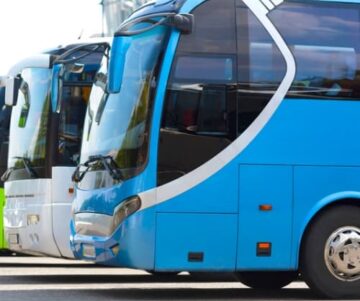
Buses
Buses provide transportation for longer distances, connecting Batangas with other regions and provinces. These buses have designated terminals and offer a more comfortable option for longer journeys.

Jeepneys
Jeepneys are a staple mode of public transportation in the Philippines. They are colorful, elongated jeeps that can carry multiple passengers. Jeepneys follow specific routes and have fixed fares.
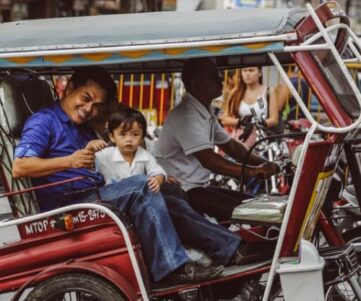
Tricycles
These motorized vehicles consist of a motorcycle with a sidecar, which can accommodate around 3 to 4 passengers. Tricycles are commonly used for short trips within the city, and fares are usually negotiable.

